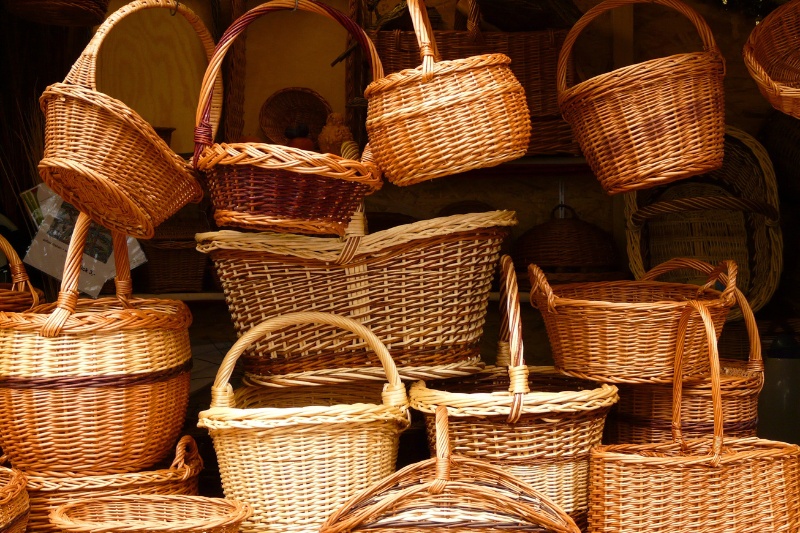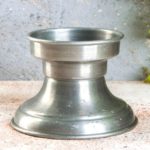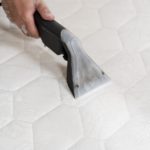Wicker baskets are aesthetically pleasing, easy to come by and don’t cost a fortune. They’re also super useful!
They can used to store laundry, toys, logs, shoes, picnics, and toiletries, just to name a few things! Which is why, as you might’ve guessed, they’re a staple in most homes.
There’s only one tiny snag with these woven structured items: they’re a haven for dust, fluff, and general debris!
Lucky for you, removing this grime is super easy, and you can use gadgets that you’ve already got at home to maintain the baskets! Follow the cleaning guide below to revive your wicker baskets.
Things to Know Before Cleaning Wicker Baskets
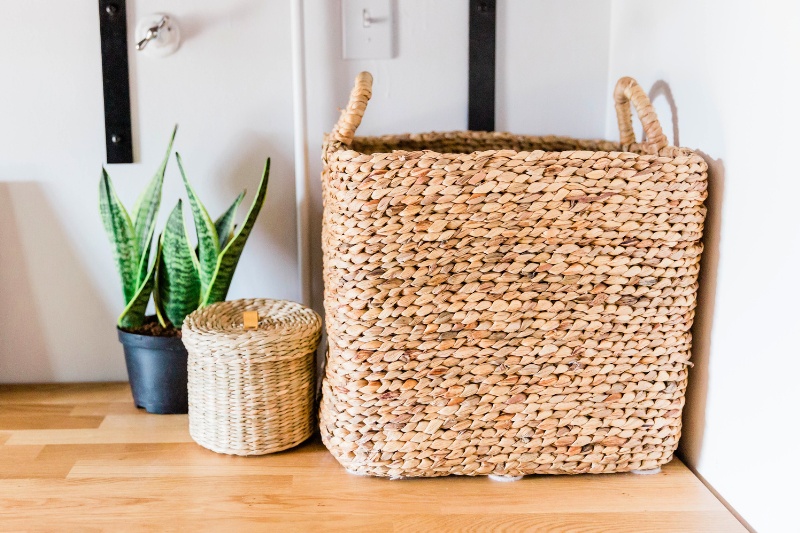
- Don’t oversaturate or submerge the wicker basket in water because this will damage the material.
- Don’t use harsh chemicals (including bleach), as this can damage and weaken the structure of the woven basket and discolour the wicker.
- Clean the baskets gently. Hard scrubbing movements can strip protective coatings off the wicker baskets, and if you’re too rough, you can break the baskets too.
- Make sure the baskets are dry before you use them again.
- Don’t use a tumble dryer, radiator, or hairdryer to speed up the drying process because this can seriously damage the wicker baskets.
- Don’t pack the wicker baskets into tight spots or fill them up with too many items. The baskets need to be in an area where there is good airflow, and loaded with an adequate amount of stuff but not overfilled!
- Add ‘Wicker Basket Cleaning’ to your regular cleaning schedules so you remember to clean the woven storage solutions. By doing this, you can keep the dust and grime at bay.
Note: You should dust your wicker baskets at least once a month (if not sooner). You should deep clean your baskets every three months (but can be done sooner if need be).
Keep in mind that baskets that come into contact with food should be cleaned after every use (picnic baskets, for example).
How to Clean Wicker Baskets Step by Step
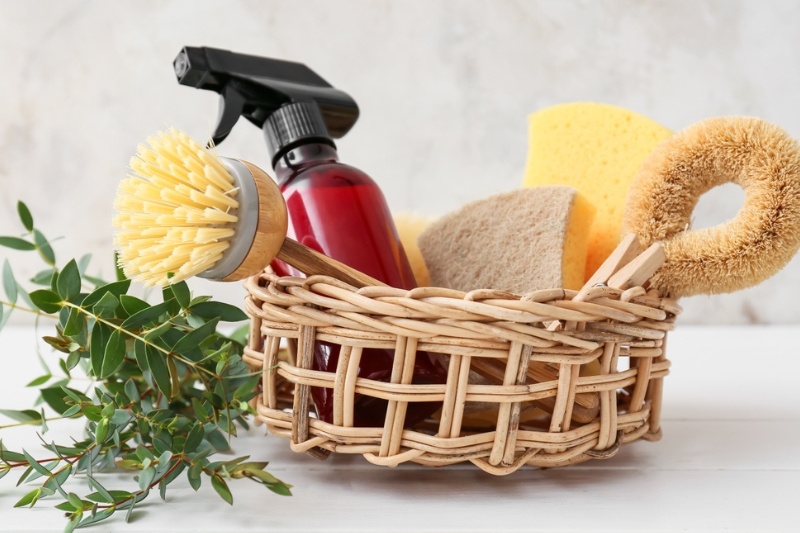
Tools you’ll need:
- Mild washing up liquid
- Water
- Microfibre cloths
- Container/dish
- Hoover with a brush attachment
- Paintbrush (optional)
- Soft toothbrush
- Washing machine (optional)
- Detergent (optional)
Steps to follow:
- Empty everything out of the wicker basket.
- Remove the lining from the wicker basket and wash it separately (see the care tag on the lining to find out how you wash it).
- Grab a microfibre cloth and dust the inside and outside of the wicker basket.
- A paintbrush or soft toothbrush can be used to dislodge toughed grime from hard-to-reach spots. Gently tease the dirt out. Don’t ram the brush into the weaves.
- Hoover the basket with the brush attachment to remove more dirt and dust.
- Fill a container/dish with warm water and add a blob or two of washing-up liquid to it.
- Dip a microfibre cloth into the soapy water.
- Wring the cloth out.
- Wipe the whole wicker basket down with the damp, soapy cloth. Get into the weave of the basket to clean it properly.
- Repeat Step 9 until you’ve cleaned the whole basket. Some spots may be dirtier than others, so pay these patches more attention.
- Allow the wicker basket to air dry.
Tip: Watch out for loose pieces of wicker! If you catch your hand on a part of damaged wicker, it can really hurt.
How to Remove Mould from a Wicker Basket
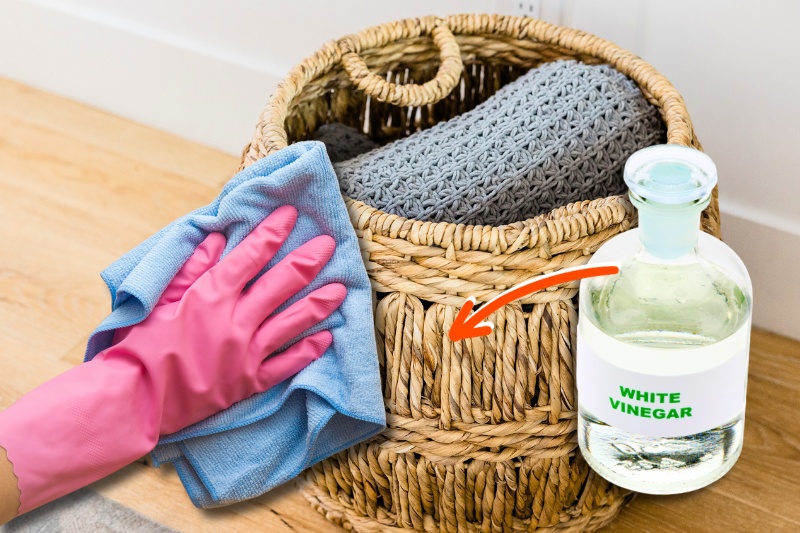
If wicker baskets are left in humid and moisture-logged areas, mould will weave its way through and over the woven structure. To remove the mould, follow the guide below.
Steps to follow:
- Mix one part of distilled white vinegar and four parts of warm water in a dish/bowl. Don’t use harsh chemicals to treat the mould because this will impact the wicker basket’s structure, making it weak and discoloured.
- Dip a microfibre cloth into the mixture.
- Wring the cloth out.
- Gently rub the mouldy areas with the cloth.
- Repeat Steps 2 to 4 until the mould is gone.
- Rinse the treated areas clean with a second damp cloth.
- Wipe the wicker basket down with a third dry microfibre cloth.
- Leave the wicker basket to air out, and then you can use it.
Preventing mould
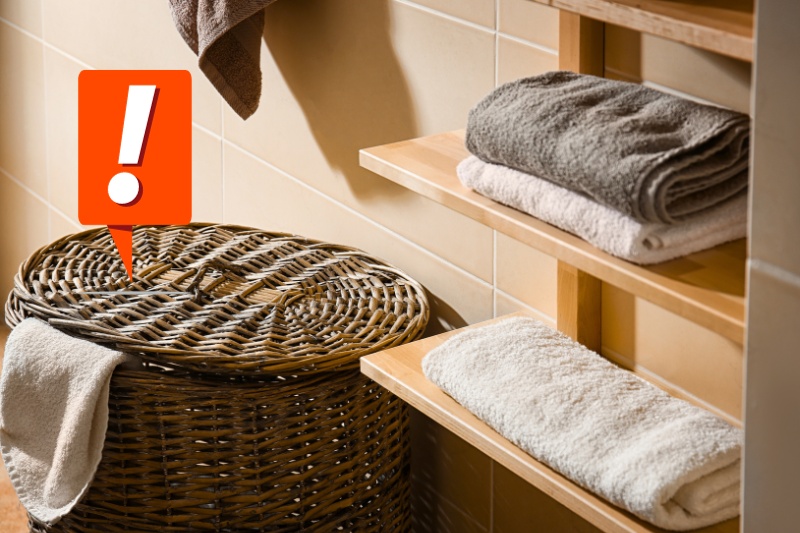
To stop the mould from returning, you must figure out why you’ve got the problem in the first place.
Consider the following:
- Is the basket left in a damp area (bathroom/condensation on a window, for example)? If so, move it to another location that is dry and less humid. You must remove your wicker baskets from damp and moisture-filled areas to stop mould from appearing and ruining your baskets in the process!
- Are you storing wet items in the basket? If so, don’t put the wet laundry/goods in the basket. Allow them to dry instead. You can store each piece in the wicker basket when it is dry.
Once you’ve figured out what could be causing the issue, you can put steps in place to deal with the problem!
How to Clean Old Wicker Baskets
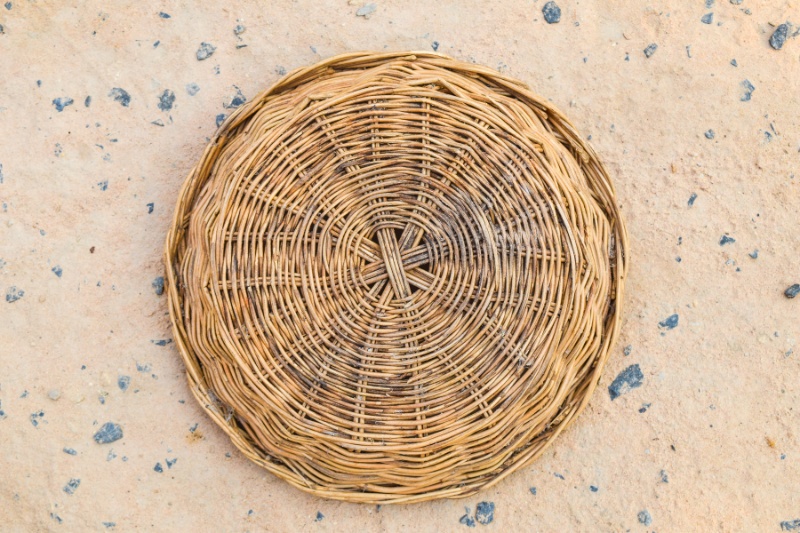
If you’ve got an old wicker basket at home, you can clean it using the steps above.
But you should use a very mild cleaner, very little water, and an extra soft toothbrush to tease the grime out of smaller spots because the material is much older and more delicate.
In addition, you’ll need to treat any mouldy patches so they don’t return. Again, you can use the steps above.
You will also need to fix the basket if it is broken. You can have a go yourself or ask a professional for help!
If you bought your wicker basket in a thrift store (charity or vintage shop), you should clean it using the processes noted above.
You must remove all of the germs, mould, and odours that are lining the basket so that it is safe for you and your family to use (this is especially true if you’ve bought a wicker picnic basket!).
How to Maintain Wicker Baskets

Wicker baskets can stick around for a very long time if they’re cared for properly. Take note of the points below:
- Don’t store your wicker baskets near or in direct heat or sunlight. This makes the wicker brittle and more susceptible to damage.
- Don’t be rough when wiping the baskets down. If you wipe too hard, you may remove protective coatings from the baskets.
- Don’t overfill the baskets, as this can put needless strain on the weaved handles and overall structure.
- Keep the wicker baskets away from wet areas, as this can encourage mould growth.
- When not in use, put the wicker baskets in dust bags to keep them safe. They can then be stored.
- Brush and hoover wicker baskets regularly to remove dust from them.
- Use leather cream to treat and maintain leather regions on your wicker baskets (leather straps, for example). Try to treat the leather sections every month to keep the leather fresh and in good condition.
- Don’t pour/place liquids directly into the baskets in case they leak. Make sure caps are screwed on, use air-tight containers to hold goods, or put items in sealable bags/trays first.
- Avoid putting body lotions/oils and hand creams on the baskets, as this can affect the material.
- If your baskets hang on a wall, ensure they’re mounted and supported properly. If you don’t hang the baskets up effectively, you’ll put pressure on the handles. As a consequence, they’ll just break.
- Rotate your baskets if you have lots of them at home. By moving each basket around, each one gets exposed to different kinds of air and humidity in the house.
- Don’t rest heavy items on top of the wicker baskets because they will lose their structure.
How Do You Know If a Wicker Basket Needs to be Replaced?

A few tell-tale signs that your wicker basket needs to be replaced are:
- The damage to your wicker basket is so substantial that the repair work you do has little effect on it.
- Large cracks and ripped bits are a good sign that the basket is on its way out.
- The basket is warping too much, and it cannot function effectively.
- The wicker is loose in lots of places.
- The handles have been torn off.
- The loose strands of wicker are a hazard, and it doesn’t make any difference how much you try to fix the problem it keeps on coming back.
- The wicker basket has changed colour.

Bethan has a passion for exploring, reading, cooking and gardening! When she’s not creating culinary delights for her family, she’s concocting potions to keep her house clean!
